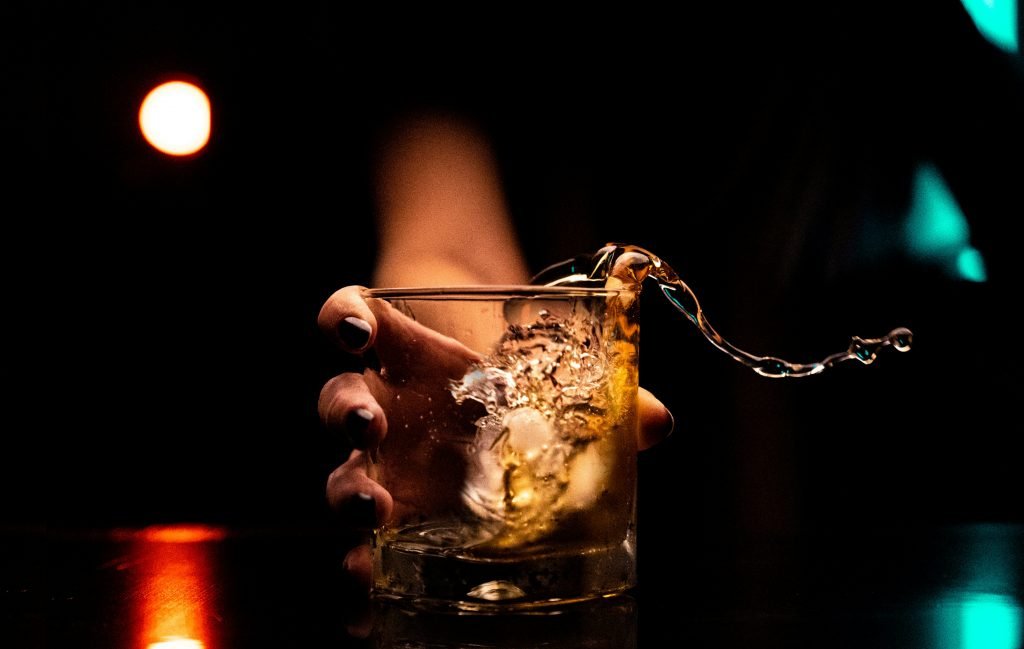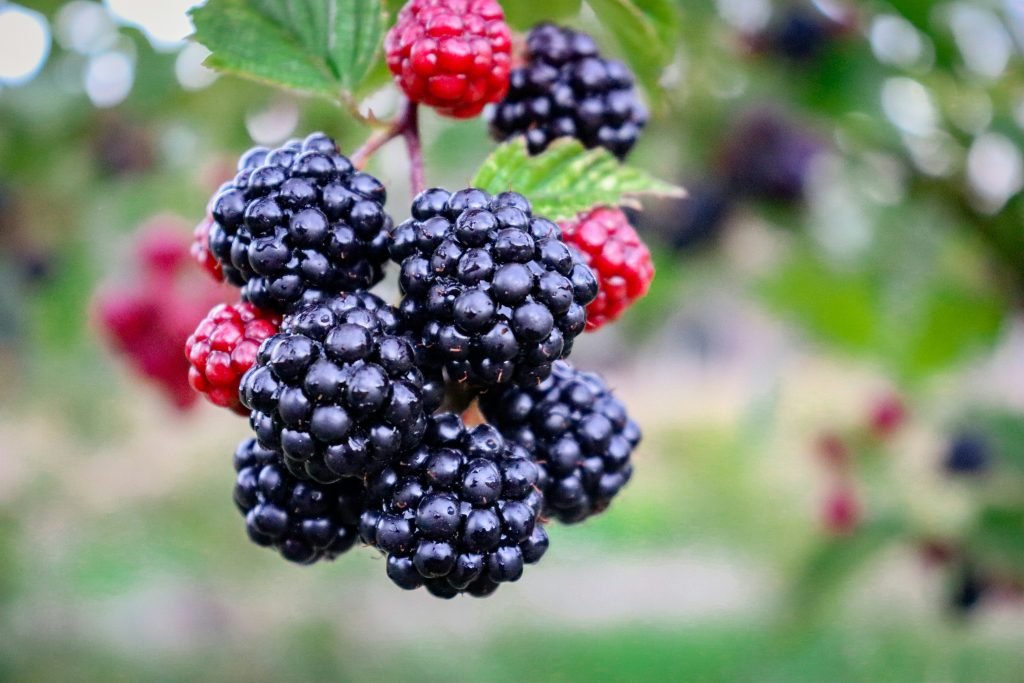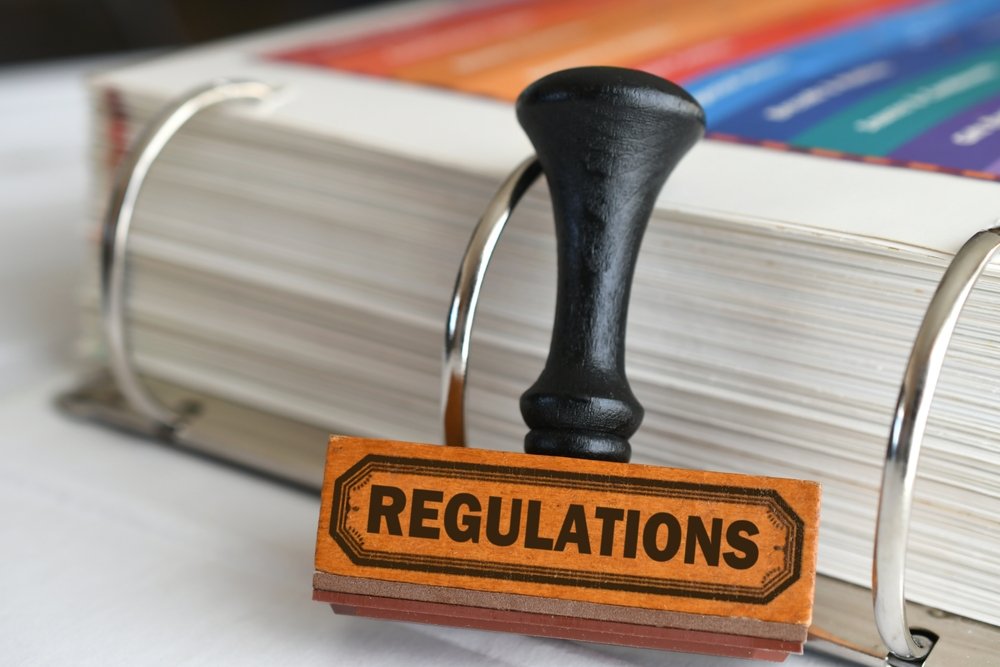
The harmful effects of excessive alcohol consumption are well-established, and it is important to support drinkers to reduce their alcohol consumption (Global Burden of Disease 2020 Alcohol Collaborators, 2022).
One way to achieve this is to develop alternatives to alcohol that are “functional” in the sense that they produce the same or similar psychoactive effects as those produced by alcohol, but without the harm.
As the authors of this review state:
The challenge is therefore how to mimic the desired effects of alcohol without using alcohol, and of course ensuring that the alternative is significantly less harmful than the alcohol it seeks to replace.

The harmful effects of alcohol are well-known. What if we had drinks that mimicked the desirable effects of alcohol, but without the harm?
Methods
This is a non-systematic narrative review that considers how knowledge about the effects of alcohol in the brain can be exploited in order to develop alternatives to alcohol that have a similar mechanism of action (and therefore should produce similar psychoactive effects), but without the harmful effects of alcohol itself.
The paper starts with an explanation of how alcohol exerts its psychoactive effects, including useful comparisons with drugs that work in similar ways such as benzodiazepines. This provides the background for a narrative review of (a) synthetic compounds and (b) botanical (plant-based) compounds, with a focus on their psychoactive effects and their potential to substitute for alcohol. The paper ends with a brief discussion of regulatory challenges that must be considered before alcohol alternatives could be made available to the public.
Results
How alcohol works
Alcohol increases activity of the neurotransmitter gamma-aminobutyric acid (GABA), which is the main inhibitory neurotransmitter in the brain. The resulting “neuronal calming” results in alcohol’s psychological effects. These include a sense of relaxation and reduced anxiety at fairly low doses, progressing to disinhibition at increasing doses, and impaired motor co-ordination and amnesia at higher doses. The rewarding or “more-ish” effects of alcohol are the result of GABA influencing other neurotransmitters and hormones, including dopamine and endorphins.
Inevitably, the pharmacology is complicated. There are at least ten different types of GABA receptors, which are differentially distributed in the brain. Different receptors are involved in sedation, anxiety, motor activity and memory – this has led to the development and widespread use of GABAergic drugs for insomnia, anxiety, and sleep. Furthermore “neurosteroids”, which are produced naturally by the brain, exert some of their psychological effects by targeting GABA receptors. Overall, the complex pharmacology of GABA means that there are a multitude of potential targets for novel compounds that could affect GABA receptors and therefore mimic some or all of the effects of alcohol.
Synthetic alcohol alternatives
Medications for insomnia, such as zopiclone, target a particular subtype of GABA receptors (a1) and can mimic some of the effects of alcohol; unfortunately this also includes the addictive potential, which limits their viability as an alcohol substitute. This has prompted the development of compounds such as AZD7325 which target other GABA receptors (a2 and a3), and which produce some alcohol-like effects. Companies such as GABA Labs (who funded this article and which is the primary affiliation of the authors; Professor David Nutt is the chief scientific officer) are working to modify these compounds to reduce their duration of action (thereby minimising any impairment), and to ensure that they will be rapidly metabolised into relatively benign metabolites. Perhaps most importantly, if these compounds can be engineered so that they function as partial agonists of specific subtypes of GABA receptors, this would provide:
an intrinsic built-in limitation to have a peak effect less than that of a full agonist: there is a ceiling to its effects that cannot be surpassed by much larger doses. Therefore, the intense intoxication that can occur with excess alcohol can be avoided.
Plant-based alcohol alternatives
Alongside engineering new GABA-ergic molecules from scratch, a different approach is to look for “natural” alternatives which already exist in plants. Many such plant extracts have been identified, including blackberry juice, magnolia, and liquorice. Unfortunately, when any one of these is taken in isolation within doses permitted under UK food regulations, they have very weak GABA-ergic effects. This prompted the development and testing of combinations of plant extracts in combination with other botanicals to increase bioavailability, which should increase their effects on GABA receptors.
The authors state that these blends have been tested “at lab scale for efficacy and positive results obtained”, and testing of a preferred blend indicated “strong potential for consumer acceptance”. This concoction – called Sentia Red – is available to purchase, so you can try it for yourself. You might first read some consumer reviews, such as this one, which awarded it four out of five stars and said
it did make us feel a little more relaxed, with a bit of lightness in the shoulders. That slight sense of composure you get with your first few sips from your poison of choice… the effects lasted about an hour, but that was enough to help us unwind at the end of the day. Tasty, masses of flavour and, best of all, it does its job.
Because I take my role as a Mental Elf contributor seriously, I purchased a bottle and tried the recommended dose with ginger beer. It’s certainly an “acquired taste” to put it diplomatically, and I may have felt some effects, but more on this later.
Finally, this section briefly considers other botanicals that have (currently underexplored) potential to mimic the effects of alcohol. These include enyzmes present in tomatoes and peppers that could, theoretically, increase neurosteroid production when ingested by humans.
Regulatory challenges
Plant-based alternatives to alcohol are already available to purchase because they contain food and herbal products in concentrations that meet food safety standards. Other botanicals that have been investigated, such as lion’s bane mushrooms, may be approved in the future.
Synthetic alcohol alternatives might be approved for sale if and when they can be approved as a “functional” food supplement such as 5-HTP (which boosts serotonin levels). For example, in the USA the “generally recognised as safe” (GRAS) route involves toxicology testing before an expert panel decide if the product is safe or not. However it isn’t clear how this would work elsewhere in the world, including in the UK and elsewhere in Europe.
Assuming that botanical and/or synthetic alternatives to alcohol are approved for sale, how and where should they be sold? The authors argue that in order to reduce alcohol-related harm, they should be available in bars and restaurants. In supermarkets, they would preferably appear in the alcohol aisles, perhaps alongside no- and low-alcohol drinks. An important point is that there is currently no intention to market these products as medications for the treatment of alcohol use disorder. Instead, they are viewed as a consumer product, which if made available could provide choice for alcohol consumers, and thereby reduce their consumption of alcoholic drinks.

Many botanicals, including blackberry juice, may stimulate GABA activity in humans, and thereby mimic the effect of alcohol.
Conclusions
The authors state that
The vision of functional alcohol alternatives as introduced by the UK government Foresight report of 2005 is near to being realised. Several botanical drinks are currently marketed, with customer reports of positive effects.
As for synthetic alternatives:
only when our ingredients have passed through the food-safety testing protocols will we be able to tell if our plans have proved successful. This process is now starting with our lead molecule and should be concluded within a year or so

Several botanical drinks are now available to buy, but will these alternatives help to reduce our alcohol consumption?
Strengths and limitations
Strengths
Reducing alcohol-related harm requires a multi-faceted approach including taxation and minimum unit pricing, restrictions on the marketing and availability of alcohol, and education and prevention programmes. It is also vital to ensure support for people with alcohol use disorders, ranging from brief interventions through to medical detoxification, psychological treatments, and peer support.
A recent development in this space is the rapid expansion of low- and no-alcohol products, which offer increased choice for consumers and have the potential to reduce alcohol-related harm if – and it’s a big if – consumers will substitute alcoholic drinks for these less harmful alternatives. But, by definition, no- and low-alcohol drinks do not contain alcohol and therefore we would not expect them to produce the psychoactive effects that motivate people to drink alcohol. In this context, any compound that could mimic the psychoactive effects of alcohol, particularly relaxation and relief from anxiety, has enormous potential. The potential and current state of play for benign alternatives to alcohol is nicely summarised in this paper.
Uncertainties
The article implies that evidence shows that these compounds produce psychological effects that mimic those produced by low doses of alcohol. But beyond vague references to studies yielding “positive results”, indicating “potential for consumer acceptance”, this evidence is not described or referred to, and I don’t believe that it exists in the peer-reviewed literature. Indeed, the authors state that:
we have begun a programme of studies with several UK universities to evaluate the short- and long-term psychological, physiological, and biochemical impacts of our drinks
The paper refers to several trial registrations for one of the synthetic compounds, but a literature search did not reveal any reports of findings from those trials. I contacted David Nutt to ask if he could share details of any relevant studies that he is aware of. He said that findings will be presented at the British Association for Psychopharmacology Summer Meeting in Birmingham in July, so watch this space (or that space)! [Editor: We’ll be reporting live from #BAP2024 in July so you can follow the conversation on social media].
Of course, any such findings would be sensitive, because the first company to demonstrate that their specific compound (synthetic or botanical) is able to mimic the psychological effects of alcohol would have a huge commercial advantage. Nonetheless, I found this opaque presentation of the science, in a non-systematic review from investigators representing a company who have much to gain from selling these products, quite troubling.
It’s relevant that many of the psychological effects of low doses of alcohol that functional alternatives are intended to mimic may be quite similar to the effects produced by “placebo” alcohol, that is drinks that the drinker believes contain alcohol but actually do not. For example, when participants consumed an alcohol or placebo cocktail in a social setting in a bar, the level of subjective and objectively-rated intoxication was indistinguishable regardless of whether participants had consumed alcohol or placebo (Bodnár et al., 2024). In laboratory studies, we found that consumption of placebo drinks increased subjective alcohol craving and subjective “lightheadedness”, although the effects were stronger after consumption of drinks containing alcohol (Fernie 2012, Christiansen 2013). The relevance of this is that, if you give someone a drink and tell them that it will produce a psychological effect akin to that produced by alcohol, it’s quite likely that it will do so, regardless of its contents. As I mentioned above, I tried Sentia Red and I felt some effects – but I was expecting to, so I don’t know if this was anything more than a placebo effect. The onus is on producers of functional alcohol alternatives to demonstrate that any psychological effects produced by their products are more than a placebo effect.

Producers of functional alcohol alternatives should demonstrate that any psychological effects produced by their products are more than a placebo effect.
Implications for practice
We don’t yet know if these compounds actually are “functional alternatives to alcohol”, as the authors claim. If this turns out to be the case, these compounds have great potential to reduce alcohol-related harm.
We can anticipate some challenges including how their marketing might be regulated, for example should they be marketed as food supplements, or should they appear in the alcoholic drinks aisles of supermarkets, as no- and low-alcohol products currently do?
The authors are very clear that they don’t anticipate a use for these products in the treatment of alcohol use disorder, but this doesn’t mean that they would not end up being used for this purpose. For example, people with alcohol problems who are attempting to abstain from alcohol may choose to use these products as a way to experience the positive effects from alcohol that they are missing out on. But because of their pharmacology, these products may “prime” the desire to drink alcohol, and thereby provoke relapse (Rose et al., 2022). It will be important to investigate this in people with alcohol use disorder. Similarly, if these products are sold as food supplements, will it be possible to prevent young people from purchasing them, and would consumption of these products affect their vulnerability to developing problems with alcohol later in life?
These examples illustrate how it will be important to ensure that any benefits of functional alternatives to alcohol outweigh their risks, particularly for these vulnerable populations. Similar concerns are currently being debated with regard to no- and low-alcohol drinks (Caballeria et al., 2022) and we might anticipate similar concerns for these products that may fill a similar niche, but with the added benefit (or risk) of psychoactive effects.

The marketing of functional alternatives to alcohol might be regulated, for example, where and to whom they can be sold.
Statement of interests
I have no conflicts of interest to declare.
Links
Primary paper
Nutt DJ, Tyacke RJ, Spriggs M, Jacoby V, Borthwick AD, Belelli D. (2022). Functional Alternatives to Alcohol. Nutrients 2022 14(18):3761. https://doi.org/10.3390/nu14183761
Other references
Bodnár, V., & Bárdos, G. (2024). Subjective and objective inebriation: a “Speed Dating” field study with placebo alcohol. Journal of Substance Use, 29(2), 216–222. https://doi.org/10.1080/14659891.2022.2146013
Caballeria E, Pons-Cabrera MT, Balcells-Oliveró M, Braddick F, Gordon R, Gual A, Matrai S, López-Pelayo H (2022). “Doctor, Can I Drink an Alcohol-Free Beer?” Low-Alcohol and Alcohol-Free Drinks in People with Heavy Drinking or Alcohol Use Disorders: Systematic Review of the Literature. Nutrients. 2022; 14(19):3925. https://doi.org/10.3390/nu14193925
Christiansen, P., Rose, A. K., Cole, J. C., & Field, M. (2013). A comparison of the anticipated and pharmacological effects of alcohol on cognitive bias, executive function, craving and ad-lib drinking. Journal of psychopharmacology (Oxford, England), 27(1), 84–92. https://doi.org/10.1177/0269881112450787
Fernie, G., Christiansen, P., Cole, J. C., Rose, A. K., & Field, M. (2012). Effects of 0.4 g/kg alcohol on attentional bias and alcohol-seeking behaviour in heavy and moderate social drinkers. Journal of psychopharmacology (Oxford, England), 26(7), 1017–1025. https://doi.org/10.1177/0269881111434621
Global Burden of Disease 2020 Alcohol Collaborators (2022). Population-level risks of alcohol consumption by amount, geography, age, sex, and year: a systematic analysis for the Global Burden of Disease Study 2020. Lancet 2022 400(10347):185-235. doi: 10.1016/S0140-6736(22)00847-9
Halsall, L., Jones, A., Roberts, C., Knibb, G., & Rose, A. K. (2022). The impact of alcohol priming on craving and motivation to drink: a meta-analysis. Addiction 2022, 117(12), 2986–3003. https://doi.org/10.1111/add.15962
Rehm, J., Rovira, P., Manthey, J., & Anderson, P. (2023). Reduction of Alcoholic Strength: Does It Matter for Public Health?. Nutrients, 15(4), 910. https://doi.org/10.3390/nu15040910
Photo credits
Source: nationalelfservice.net







 Please wait...
Please wait...

Add comment